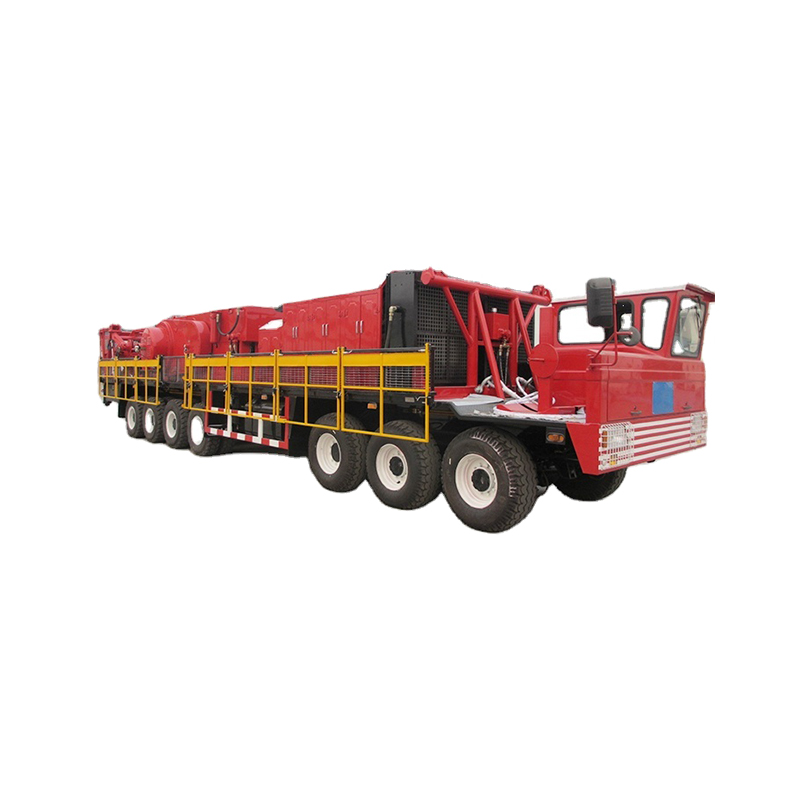Drilling rigs are essential in the exploration and production of oil reserves. They are deployed in various locations, both onshore and offshore, to reach underground reservoirs and extract crude oil. The drilling rig serves as a platform for drilling boreholes, evaluating geological formations, and ultimately tapping into oil reservoirs.

Components of an Oil Drilling Rig
An oil drilling rig comprises several key components, each playing a crucial role in the drilling process:
A. Derrick or Mast
The derrick or mast is a tall, vertical structure that provides support for the drilling operations. It houses the drilling equipment, including the Mounted drilling rig floor, hoisting system, and other essential components. The height of the derrick or mast depends on the depth of the well being drilled.
B. Drill String
The drill string is a series of interconnected pipes and tools that transmit drilling fluid and rotational force to the drill bit. It typically consists of drill pipes, drill collars, and various drilling tools. The drill string allows for the penetration of the drilling bit into the subsurface formations.
C. Drill Bit
The drill bit is the cutting tool at the end of the drill string. It is designed to penetrate the earth's surface, creating a borehole for the extraction of oil. Drill bits come in different types, such as roller cone bits and fixed cutter bits, depending on the drilling conditions and formation characteristics.
D. Mud Circulation System
The mud circulation system, also known as the drilling fluid system, plays a vital role in drilling operations. It circulates drilling fluid (mud) down the drill string, through the drill bit, and back to the surface. The mud serves various purposes, including cooling the drill bit, carrying cuttings to the surface, and maintaining wellbore stability.
E. Blowout Preventer (BOP) System
The blowout preventer (BOP) system is a critical safety mechanism installed near the wellhead to prevent uncontrolled release of oil or gas. It consists of various valves and rams that can be activated to seal the wellbore in case of an emergency. BOP systems are designed to maintain well control and prevent blowouts.
F. Hoisting System
The hoisting system is responsible for lifting and lowering the drill string, drill bit, and other equipment into and out of the wellbore. It includes the drawworks, derrick or mast, crown block, and traveling block. The hoisting system enables efficient drilling operations and ensures the safe handling of heavy loads.
G. Power Generation
Oil drilling rigs require a reliable power source to operate the various equipment and systems. Power generators, often powered by diesel engines, provide electricity for drilling operations, lighting, control systems, and other power-dependent components on the rig.
Oil Drilling Process
The oil drilling process involves several stages:
A. Site Preparation
Before drilling commences, the chosen location is prepared by clearing the area, leveling the ground, and establishing necessary infrastructure. Environmental considerations are also addressed during site preparation.
B. Well Spudding
Well spudding marks the beginning of drilling. It involves drilling a small-diameter pilot hole using a smaller drill bit and progressively increasing the hole size to accommodate the desired well diameter.
C. Drilling Operations
During drilling operations, the drill string with the drill bit attached is rotated and fed into the borehole. Drilling fluid is continuously circulated to cool the bit, carry cuttings to the surface, and provide wellbore stability.
D. Formation Evaluation
Throughout the drilling process, samples of rock formations and fluid are collected and analyzed to evaluate the presence of oil or gas, assess formation characteristics, and determine the potential productivity of the well.
E. Casing and Cementing
Casing pipes are inserted into the wellbore to provide structural integrity and prevent well collapse. Cement is then pumped into the annular space between the casing and the wellbore walls to secure the casing in place and create a barrier between different geological formations.
F. Completion and Production
Once the desired depth is reached, the drilling rig is removed, and completion operations commence. Completion involves installing production equipment, such as tubing, packers, and surface facilities, to enable the extraction of oil or gas from the well.
Oil drilling rigs are intricate structures that enable the exploration and production of oil reserves. Through the integration of various components and the execution of drilling processes, these rigs facilitate the extraction of this valuable natural resource. Understanding the key components and processes involved in an oil drilling rig provides insights into the complex operations and engineering efforts required to meet global energy demands.


Comments
Please Join Us to post.
0